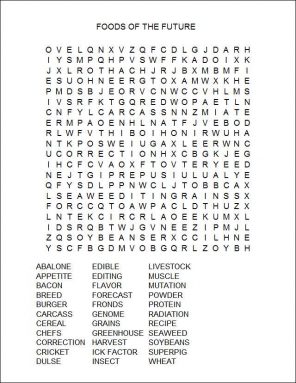Cool Jobs: Finding foods for the future
Researchers combine creativity with science to develop new edibles from the land and sea
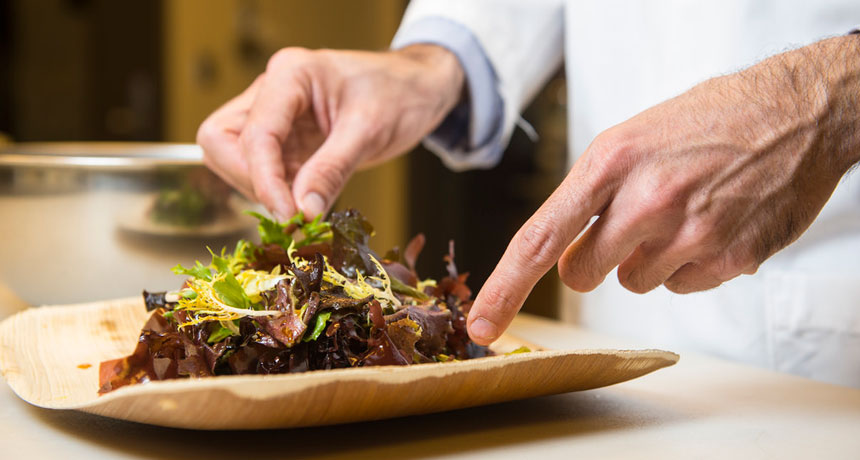
A reddish-purple seaweed called dulse could be a food of the future. Here it is served in a salad. But fried, it tastes like bacon.
Stephen Ward/OSU
Meet dulse, a seaweed with a secret.
This translucent red alga grows along northern, rocky coastlines of the Atlantic and Pacific oceans. And its colorful, leathery fronds hide a remarkable flavor. When tossed with oil and fried in a pan, they taste like bacon.
“I think it is a food of the future,” says Chris Langdon. This marine scientist has been studying dulse for more than a decade at Oregon State University in Portland. During that time, he has found new ways to grow it faster. The alga not only grows cheaply and easily, he notes, but also is rich in protein. Those qualities haven’t been lost on creative chefs who are searching for new ways to incorporate this unlikely treat into their recipes.
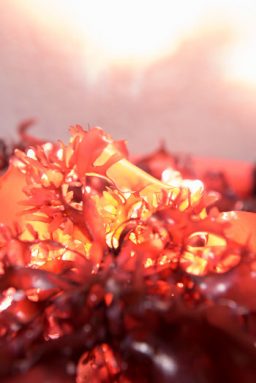
DLT, anyone? (That’s a dulse, lettuce and tomato sandwich.)
People need to seek out new foods because the world has so many mouths to feed. As of 2015, there are more than seven billion people on Earth, according to the United Nations. And by 2100 that number may double, according to some predictions. Feeding all of these people means not only improving the way food is grown, but also finding new sources of nutrition.
And that quest is becoming ever more urgent. If nothing changes, within 35 years, the world’s appetite will be greater than the amount of food produced. That’s according to a report released last year. It was prepared by the Global Harvest Initiative, a private agriculture group based in Washington, D.C.
Global warming, too, is changing food production. Scientists predict that rising temperatures will reduce the growth of important crops like wheat, corn and soybeans. Low-income developing countries will be hit the hardest. When harvests fall, crops become more expensive. And since those foods are also used to feed animals like cows and pigs, meat prices, too, will rise.
All over the world, researchers are racing against the clock to figure out how best to feed more people in a feverish world. And some surprising ideas have begun to emerge. Two years ago, scientists unveiled the first burger made from meat grown in a lab, rather than taken from a carcass. (The project cost more than $300,000, but it’s a start.) Other researchers are developing seeds that can survive high temperatures and drought. Still others are finding ways to modify the genes of meat animals so they produce more meat and can stand the heat.
A gloomy forecast for the planet isn’t the only reason to study foods for the future. It’s a creative quest that will enlist people who can think in new ways about existing plants and animals — even insects. These researchers often collaborate with experts in other areas. Langdon, for example, has worked with business experts, food scientists and chefs.
Here, we meet three people from different research fields who have found new ways to think about food — namely algae, pigs and mini-livestock (bugs). These researchers have found inspiration from surprising sources. And they’ve used their talents in ways that even they never would have predicted.
Bright red seaweed
Langdon never meant to work on what might prove to be the next great superfood. In the mid-1990s, he was more concerned with abalone. It’s a type of sea snail that can grow as large as a dinner plate. The dazzling interior of an abalone shell often shows up in jewelry, and many seafood restaurants have put abalone on their menus. Abalones thrive on dulse, so Langdon was looking for ways to make the algae grow faster.
“My story is an example of how you can start with one project and end up in another,” he says.
Most dulse is harvested by hand in the summer from rocky coastal areas at low tide. That takes a lot of work. By the time the seaweed gets to a store, it can cost $30 per pound or more. Langdon and his team wanted to grow dulse in a tank. That should make it less expensive to harvest and always available.
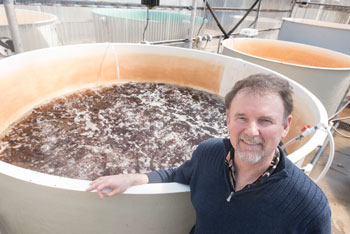
Ten years ago, he developed a fast-growing dulse that could double its weight in a week. It was perfect for feeding abalones. His former students even started an abalone farm in Hawaii.
As it turned out, dulse also works well for feeding people. A few years ago, a business professor went to Langdon, looking for new projects that his students might tackle. Langdon suggested they figure out how to sell dulse as human food. In no time, a partnership was born.
The teachers brought in students, food scientists and a local chef named Jason Ball who was known for his food experiments. (“He starts with all kinds of fun ingredients and makes incredible dishes out of them,” explains Langdon.)
The team set to work experimenting with the seaweed and developing recipes. Along the way, Ball found a way to fry dulse in oil. And to his surprise, this dish tasted a lot like bacon.
“We thought we were the first in the world to discover this,” says Langdon. They were wrong. Once newspaper articles began talking about their bacon-flavored seaweed, many people called up to note they had already discovered this. “Some of them were quite angry,” laughs Langdon, that their tasty secret was getting out.
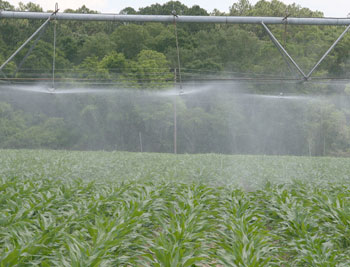
Dulse is an appealing future food for many reasons. It thrives on carbon dioxide, which is a greenhouse gas that contributes to global warming. Much of that carbon dioxide ends up in the ocean, where it can cause the water to become
. Plants and algae can lower that carbon-dioxide burden.
The commercial farming potential for dulse makes it even more appealing. Crops like wheat, corn and soybeans need fresh water to grow. Dulse doesn’t. In addition, people can eat every part of dulse. Contrast that with cereal grains such as wheat and corn. People only eat the seeds, throwing away the leaves, stems and roots. And dulse is rich in protein. When dry it has about as much as a hard-boiled egg. (Protein, which the body needs for building muscle, is an essential part of a healthy diet.)
In the future, dulse may be suited for dinner plates far away from home, too. Langdon thinks it would make an ideal food for long-term trips to outer space. “If you’re going to Mars or setting up a station on the moon,” he says, “you may want to have dulse as one of your food items. All you have to do is reach into a tank and pull it out with your hand.” As an added bonus, he says, it’s a food source that would help to clean the air.
Eat more crickets
Dulse isn’t the only readily available food that’s long been overlooked. Aaron Dossey thinks it’s time for people to eat more bugs. A biochemist in Athens, Ga., he’s thinking about crickets.
These insects are sold as fish bait or as food for pets such as reptiles. In the 1990s, roasted crickets were even served at The Insect Club in Washington, D.C., which included other insects on its menu.
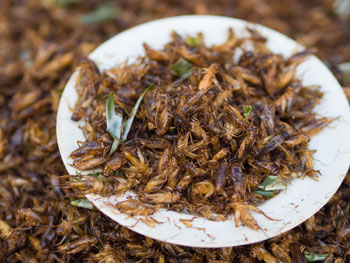
Dossey is aware of what he calls the “ick” factor — the natural aversion many people have to eating bugs. It doesn’t bother him. “The ick factor doesn’t seem to be as substantial as most people think,” he says. At the same time, he thinks whole crickets are at a disadvantage compared to other bugs. “People may actually be less repulsed by eating a mealworm because it looks like a little
,” he says, “whereas the cricket has its appendages and may get stuck in your teeth.”
For the past two years, this scientist has been making and selling powdered crickets through his company, All Things Bugs. The product is exactly what it sounds like: Lots of crickets blended together, then dried and ground into a fluffy dust that looks like light brown flour. Already, his cricket powder has caught the attention of health-food makers. They have begun adding it to protein shakes, snack chips, other snack foods and protein bars.
And then there is pasta made from crickets. Claims Dossey: “It tastes great!”
“Another thing I like to do is mix the powder with water, and cook it down until it curdles and solidifies,” he says. This forms a delicious (he claims) sausage substitute or meat for tacos. Crickets are appealing, Dossey says, because they’re easy to grow and are high in protein. Cricket powder has almost as much protein, by weight, as does ground beef or milk.
As a child, Dossey kept a collection of hundreds of different types of insects. But he never thought they’d play such an important role in his career. About five years ago, he began meeting with other scientists who were exploring insects as a source of food. In 2012, he received a grant to pay for research on crickets as food.
He started by “raising a bunch of bugs in my apartment,” he recalls. Soon it became clear he couldn’t possibly raise as many bugs there as he’d need. He then started buying them in bulk from nearby cricket farms. By 2014, he’d started a cricket-powder company and was selling the fluffy brown stuff to customers.
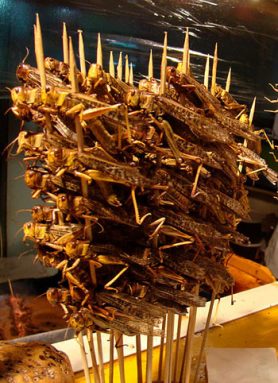
Scientists have identified more than 2,000 edible insect species worldwide. In some parts of the world, Dossey notes, eating insects is
. These bugs are even referred to by some scientists as mini-livestock. But in North America and Europe, this menu item has not caught on (or “grown legs,” you might say). Some studies suggest this distaste for bugs comes from the negative portrayal of edible bugs in the news media.
Researchers like Dossey say it’s time to look at eating bugs with fresh eyes. Nutritious, easy to grow and abundant, crickets show promise as a healthy source of food.
Super pigs
In many countries, especially in North America and Europe, people tend to eat a lot of meat, especially from cows and pigs. Those animals require a lot of land on which to live and grow. Crops cover a fifth of the land in the United States. But raising livestock takes even more space — about one-fourth of the nation’s land. Scientists are looking for ways to produce more meat using less land. And researchers in South Korea and China have an idea: the super-pig.
These researchers have changed the genes in a type of pig to create an animal that bulks up, packing on more muscle. Typically, muscle tissue is the part of an animal that becomes meat for food. Biologist Jin-Soo Kim at Seoul National University in South Korea leads super-pig research there.
A gene is a small bit of the DNA found in almost every cell. It helps determine some aspect of an organism. A group of genes determines a person’s eye color, for example. After more than two decades, Kim has become an expert in gene editing. This technology allows scientists to remove or alter a single gene in some organism. This changes the gene (but doesn’t replace it with DNA from another organism).
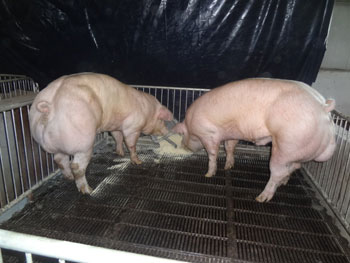
Kim had previously used gene editing with zebrafish and mice. To create a super-pig, his team looked at research on the Belgian Blue cow. This breed was created by farmers in the19th century. It is “well known for leaner meat and a higher yield of meat,” notes Kim. Belgian Blues are said to be “double-muscled” because they pack on so much lean muscle they look like superheroes of the bovine world.
A mutation is a change that may, like a switch, turn a gene off or cause other changes to a gene’s function. Belgian Blue cattle have a mutation in a gene called MSTN. This gene acts like a brake on muscle growth: It normally slows the growth of muscle. Without this gene working correctly, muscles now can grow bigger and faster than usual.
Kim and his team used gene editing to snip out the MSTN gene in individual cells taken from a pig embryo.
They used the tweaked cell to produce an entire litter of piglets. These clones, which had the same exact DNA as the initial tweaked cell, eventually grew into adult pigs. And the muscles of these pigs grew quickly — and big.
The adult hogs look “very similar to Belgian Blue” cattle, Kim told Science News for Students. Like Belgian Blues, they appeared bulky with oversized muscles.
Kim cautions that so far, “we have not analyzed the meat quality carefully.” By this he means that his team does not yet know if it’s safe for people to eat. But that work is underway. He also notes that many of the 32 original cloned pigs had health problems. Only two are still alive. So his work is only an early step in using gene editing to modify livestock.
Some people worry that tweaking genes in an animal could have unexpected, harmful impacts. Kim isn’t. He notes that mutations happen naturally, changing genes at random. Exposure to radiation or chemicals also can break or change DNA in individual cells, leading to mutations. Editing individual genes speeds up the process, Kim says, and removes the randomness of which genes will be affected.
Pig farmers could develop super-muscled pigs by finding and breeding only those with a natural MSTN-shutdown mutation. That might take many generations —and years —of pig breeding. Genome editing works in the same way, just faster. (Genome refers to all the genes in an organism’s DNA.)
Kim sees a lot of potential uses for the editing technology. Such gene correction, he says, could “cure diverse genetic and non-genetic diseases.” It also might help improve crops, livestock and fish. “We are now working on modifying genes in other large animals, such as dogs and cow,” he says.
Don’t go looking for super-bacon at your local grocery just yet. Animals with genes tweaked in the lab have not yet been approved for consumption. More studies would be needed to ensure that they’re safe. But Kim and his colleagues hope that day will not be far away.
As the world changes and grows, scientists are pursuing new and clever ways to feed the planet. For researchers like Kim, Dossey and Langdon, the question isn’t “what’s for dinner?” but “what’s for dinner… tomorrow?”
This is the first in a series on careers in science, technology, engineering and mathematics made possible with generous support from Alcoa Foundation.
Power Words
(for more about Power Words, click here)
abalone A type of sea snail that can grow as large as a dinner plate.
acid A chemical that increases the level of hydrogen ions in a solution.
acidic An adjective for materials that contain acid. These materials often are capable of eating away at some minerals such as carbonate, or preventing their formation in the first place.
acidification A process that lowers the pH of a solution. When carbon dioxide dissolves in water, it triggers chemical reactions that create carbonic acid.
algae Single-celled organisms, once considered plants (they aren’t). As aquatic organisms, they grow in water. Like green plants, they depend on sunlight to make their food.
appendage A finger, leg, ear, antenna or other feature that sticks out from some creature and has some apparent specific function.
biology The study of living things. The scientists who study them are known as biologists.
bovine Having to do with cows.
carbon dioxide A colorless, odorless gas produced by all animals when the oxygen they inhale reacts with the carbon-rich foods that they’ve eaten. Carbon dioxide also is released when organic matter (including fossil fuels like oil or gas) is burned. Carbon dioxide acts as a greenhouse gas, trapping heat in Earth’s atmosphere. Plants convert carbon dioxide into oxygen during photosynthesis, the process they use to make their own food.
cell The smallest structural and functional unit of an organism. Typically too small to see with the naked eye, it consists of watery fluid surrounded by a membrane or wall. Animals are made of anywhere from thousands to trillions of cells, depending on their size.
chemical A substance formed from two or more atoms that unite (become bonded together) in a fixed proportion and structure. For example, water is a chemical made of two hydrogen atoms bonded to one oxygen atom. Its chemical symbol is H2O.
clone An organism that has exactly the same genes as another, like identical twins. Often a clone, particularly among plants, has been created using the cell of an existing organism.
developing country A poorer country with relatively little industry and a lower standard of living than industrial countries, such as the United States and Canada.
DNA (short for deoxyribonucleic acid) A long, double-stranded and spiral-shaped molecule inside most living cells that carries genetic instructions. In all living things, from plants and animals to microbes, these instructions tell cells which molecules to make.
dulse The common name for a seaweed in the genus Palmaria.
edit To change something in a way that improves it or corrects an error. For instance, a writer’s boss typically edits his or her words to improve their spelling, grammar, style and clarity.
embryo The early stages of a developing vertebrate, or animal with a backbone, consisting only one or a or a few cells. As an adjective, the term would be embryonic — and could be used to refer to the early stages or life of a system or technology.
gene (adj. genetic) A segment of DNA that codes, or holds instructions, for producing a protein. Offspring inherit genes from their parents. Genes influence how an organism looks and behaves
generation A group of individuals born about the same time or that are regarded as a single group. Your parents belong to one generation of your family, for example, and your grandparents to another. Similarly, you and everyone within a few years of your age across the planet -are referred to as belonging to a particular generation of humans.
genetic Having to do with chromosomes, DNA and the genes contained within DNA. The field of science dealing with these biological instructions is known as genetics. People who work in this field are geneticists.
genetic engineering The direct manipulation of an organism’s genome. In this process, genes can be removed, disabled so that they no longer function, or added after being taken from other organisms. Genetic engineering can be used to create organisms that produce medicines, or crops that grow better under challenging conditions such as dry weather, hot temperatures or salty soils.
genome The complete set of genes or genetic material in a cell or an organism. The study of this genetic inheritance housed within cells is known as genomics.
global warming The gradual increase in the overall temperature of Earth’s atmosphere due to the greenhouse effect. This effect is caused by increased levels of carbon dioxide, chlorofluorocarbons and other gases in the air, many of them released by human activity.
grant (in research) An award of money to help finance research. It may be made by the government, industry groups or even individuals. Most university work is financed by grants from outside funding agencies.
greenhouse gas A gas that contributes to the greenhouse effect by absorbing heat. Carbon dioxide is one example of a greenhouse gas.
hog A domesticated (not wild) pig raised as a source of meat.
insect A type of arthropod that as an adult will have six segmented legs and three body parts: a head, thorax and abdomen. There are hundreds of thousands of insects, which include bees, beetles, flies and moths.
livestock Animals raised for meat or dairy products, including cattle, sheep, goats, pigs, chickens and geese.
marine Having to do with the ocean world or environment.
mealworm The larval (wormlike) form of the darkling beetle (Tenebrio molitor).
media (in the social sciences) A term for the ways information is delivered and shared within a society. It encompasses not only the traditional media — newspapers, magazines, radio and television — but also Internet- and smartphone-based outlets, such as blogs, Twitter, Facebook and more. The newer, digital media are sometimes referred to as social media.
muscle A type of tissue used to produce movement by contracting its cells, known as muscle fibers. Muscle is rich in a protein, which is why predatory species seek prey containing lots of this tissue.
mutation Some change that occurs to a gene in an organism’s DNA. Some mutations occur naturally. Others can be triggered by outside factors, such as pollution, radiation, medicines or something in the diet. A gene with this change is referred to as a mutant.
organism Any living thing, from elephants and plants to bacteria and other types of single-celled life.
proteins Compounds made from one or more long chains of amino acids. Proteins are an essential part of all living organisms. They form the basis of living cells, muscle and tissues; they also do the work inside of cells. The hemoglobin in blood and the antibodies that attempt to fight infections are among the better known, stand-alone proteins. Medicines frequently work by latching onto proteins.
radiation One of the three major ways that energy is transferred. (The other two are conduction and convection); or the energy beamed over some distance by X- or gamma rays, by alpha particles (positively charged particles, each of which consists of two protons and two neutrons bound together) or by beta particles (a fast-moving electron emitted during the radioactive decay of some element).
seaweed Large algae growing in the sea or on rocks below the high-water mark.
technology The application of scientific knowledge for practical purposes, especially in industry — or the devices, processes and systems that result from those efforts.
translucent The property of letting light through, but not being transparent. Usually, things viewed through a translucent material (such as frosted window glass) appear as hazy shapes with no detail.
zebrafish A small tropical freshwater fish belonging to the minnow family. Zebrafish are used frequently in scientific research because they grow quickly and their genetic makeup is well understood.
Word Find (click here to enlarge for printing)
